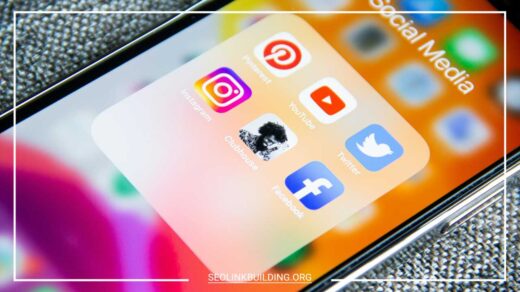Content Refreshing: Boost SEO & Revitalize Your Content

Content Refreshing
Content Refreshing: Breathing New Life into Your Digital Assets
In the fast-paced, ever-evolving digital landscape, the relevance of online content can feel as fleeting as the wind. The information we create today, whether a blog post, video, infographic, or high-ranking webpage, can quickly become outdated or overshadowed by new developments.
What once drew the attention of readers or climbed to the top of search engine results pages (SERPs) may soon find itself buried under a sea of new content.
This is where content refreshing comes into play—a critical process that helps businesses and organizations breathe new life into their existing digital assets.
Through careful revision, updating, and optimization, content refreshing not only ensures that content remains relevant but also boosts performance, drives more traffic, and ultimately helps organizations achieve their goals.
Content refreshing is more than just a quick fix. It’s a strategic, ongoing process that involves evaluating existing content, identifying areas for improvement, and implementing targeted updates to maintain the value, engagement, and SEO optimization of those assets.
When done correctly, refreshing your content extends its lifespan, maximizes the return on your investment, and allows you to leverage the hard work you’ve already put in.
Rather than creating entirely new content, this approach ensures that your existing digital assets continue to work for you, producing positive results over time.
Why Content Refreshing Matters in Today’s Digital Ecosystem
Content refreshing is far more than a good practice—it is an essential strategy for staying competitive in today’s digital world. Here are some key reasons why refreshing content should be a priority for anyone involved in digital marketing, SEO, or content creation:
1. Enhanced SEO Performance and Search Engine Visibility
Search engines like Google thrive on fresh, relevant, and authoritative content. The more regularly you update your content, the more likely you are to improve your search engine rankings.
Search engines favor content that is continually refreshed because it signals to them that your website is being actively maintained and is providing accurate, up-to-date information.
In contrast, stale content—content that has not been updated for a while—can negatively impact your rankings, causing your site to fall behind in search results.
By keeping your content fresh, you give it a better chance of climbing back up the SERPs, attracting more organic traffic, and ensuring that your content is working hard for you.
2. Improved User Experience and Audience Engagement
Today’s internet users are increasingly impatient. They demand current, reliable, and engaging content that answers their questions quickly.
If your content is outdated, contains broken links, or offers irrelevant information, it can lead to a poor user experience.
This may cause visitors to leave your site quickly, increasing your bounce rates and hurting your overall engagement metrics.
Content refreshing ensures that users encounter valuable, accurate, and compelling information, which can lead to longer time on site, fewer bounces, and higher engagement levels.
By keeping content fresh and relevant, you can build trust with your audience and encourage repeat visits.
3. Increased Lead Generation and Conversion Rates
For businesses, content is a key driver of lead generation and conversion. Outdated content, whether in the form of old product descriptions, irrelevant call-to-actions, or obsolete services, can prevent you from generating valuable leads and closing sales.
For instance, if your pricing information is no longer accurate or your service offerings have changed, potential customers may hesitate to take action.
Content refreshing ensures that all of your digital touchpoints, including landing pages, sales pages, and blog posts, reflect the most current information about your products or services.
By improving the accuracy and relevance of your content, you can increase lead generation, enhance your conversion rates, and see a direct boost in your bottom line.
4. Strengthening Brand Authority and Credibility
When you consistently provide accurate, up-to-date, and valuable information, you position yourself as a trustworthy authority in your industry.
Visitors who see that your content is current and relevant are more likely to perceive your brand as reliable, credible, and an expert in its field.
On the other hand, outdated or inaccurate content can damage your brand’s reputation and make potential customers question your expertise.
Content refreshing allows you to maintain your authority by ensuring that your website is filled with accurate, up-to-date information. This not only strengthens your brand but also helps to foster customer loyalty and trust.
5. Extending the Lifespan and ROI of Your Content Assets
Creating high-quality content is no small feat. It takes time, effort, and resources to produce content that resonates with your audience and performs well in search engines.
With content refreshing, you maximize the return on your investment by extending the lifespan of your existing content.
Instead of constantly producing new assets from scratch, you can leverage your existing content library by updating and optimizing what you already have.
This is a more cost-effective approach that allows you to extract more value from previous efforts, reducing the need to start over every time you want to create new material.
6. Addressing Content Decay and Maintaining Relevance
The digital world is dynamic. New trends emerge, user needs evolve, and best practices change. As a result, content that was once relevant can quickly lose its impact.
Content decay is a natural process, where content that was once highly valuable becomes outdated over time.
By regularly refreshing your content, you ensure that it remains in tune with current trends and continues to resonate with your target audience.
Content refreshing enables you to maintain the relevance of your material, keeping it fresh, accurate, and useful for your audience.
Identifying Content That Needs Refreshing: Recognizing the Signs
Not all content requires refreshing at the same rate. The key to an effective content refresh strategy is understanding which pieces of content need to be updated and why. Here are several indicators that a piece of content may need refreshing:
- Declining Website Traffic: If a piece of content was once driving a substantial amount of traffic but has seen a significant drop in visits, it’s time to assess whether it’s outdated or no longer ranking well due to shifts in search algorithms.
- High Bounce Rate and Low Time on Page: If users quickly leave a page or fail to engage with the content, it could indicate that the information is no longer valuable or relevant to their needs.
- Decreasing Keyword Rankings: A drop in the keyword rankings of specific content signals that it may need optimization or updating to regain its ranking power.
- Outdated Information or Statistics: Time-sensitive content such as statistics, industry reports, or research findings should be updated regularly to reflect the most recent data.
- Broken Links or Images: Links may break, and images may disappear over time. Regularly checking and updating these elements ensures that your content remains fully functional and visually appealing.
- Changes in Industry Trends or Best Practices: If there are significant shifts in industry trends, regulations, or best practices, it’s important to update content to reflect those changes and ensure it remains authoritative.
- Poor Readability or Engagement: Content that lacks clarity, structure, or engagement elements like visuals or interactive features may need a refresh to improve readability and user experience.
- Content Gaps: Over time, users’ needs evolve, and new questions may arise. Refreshing content can involve expanding it to fill content gaps and answer new user queries more comprehensively.
The Content Refreshing Process: A Strategic Approach
A successful content refreshing strategy involves a structured, step-by-step approach. Here’s a comprehensive guide to refreshing your digital content effectively:
1. Conduct a Content Audit
Start by conducting a content audit. This involves inventorying all the content assets you have—blog posts, articles, landing pages, infographics, videos, etc.—to assess their current value, performance, and relevance.
2. Analyze Content Performance
Once you’ve compiled a list of your content assets, the next step is to evaluate their performance. Use tools like Google Analytics and Google Search Console to assess key metrics, such as traffic, bounce rate, time on page, conversions, and keyword rankings. Identifying top performers and underperforming assets will help you prioritize which pieces to refresh.
3. Identify Content for Refreshing
Based on your performance analysis, identify the content that’s most in need of refreshing. Prioritize content that has a high potential to drive results, such as top-traffic pages, content targeting key keywords, or high-conversion landing pages.
4. Perform Keyword Research
Before diving into content updates, conduct fresh keyword research to ensure that your content is optimized for the latest search trends.
Identifying high-volume keywords relevant to your audience will help ensure your content is still discoverable.
5. Update and Optimize the Content
The core of content refreshing is updating the content itself. Add new data, statistics, or examples, correct outdated information, and expand on sections that need more depth.
Make sure the content remains engaging and relevant to your target audience. This might include restructuring the content for clarity, improving readability, and addressing user queries more thoroughly.
6. Optimize for SEO
While updating the content, ensure you optimize it for SEO. Update your title tags, meta descriptions, header tags, and internal linking strategy to reflect your refreshed content and target keywords. This step ensures your content is more easily discoverable by search engines.
7. Update Visuals and Multimedia
Content is not just about text. Refresh outdated visuals like images, videos, or infographics, and replace them with high-quality, relevant, and engaging multimedia. Visual content can significantly enhance the user experience and improve engagement.
8. Review and Edit
Once you’ve made the necessary updates, review the content thoroughly for any spelling, grammar, or factual errors. Ensuring your content is polished and easy to digest will improve its overall quality.
9. Republish and Promote
After updating the content, republish it with a new date to reflect its freshness. Promote your refreshed content through email newsletters, social media channels, and other marketing efforts to notify your audience of the update.
10. Monitor and Analyze Performance
After republishing the refreshed content, track its performance using analytics tools to measure traffic, engagement, rankings, and conversions. Use this data to fine-tune future content refresh strategies.
Types of Content Refreshing
Content refreshing can vary in scope depending on the need. Here are some common types of content refreshing:
- Minor Updates: Simple revisions, such as fixing broken links or updating statistics.
- Significant Updates: Adding substantial new information, revising outdated sections, or reformatting entire pieces.
- Content Repurposing: Transforming existing content into different formats, such as turning a blog post into a podcast, video, or infographic.
- Content Consolidation: Combining related pieces of content into a comprehensive, unified resource.
- Content Removal: In some cases, it may be better to remove outdated or irrelevant content altogether.
Tools and Technologies to Aid Content Refreshing
Several tools can streamline the content refreshing process:
- SEO Analysis Tools: Google Analytics, SEMrush, and Ahrefs provide insights into keyword rankings, site traffic, and SEO performance.
- Content Management Systems (CMS): Platforms like WordPress, HubSpot, and Drupal make it easier to update and manage content.
- Keyword Research Tools: Tools like Google Keyword Planner and Ahrefs can help identify high-value keywords for content optimization.
- Grammar and Readability Tools: Grammarly, Hemingway Editor, and ProWritingAid ensure content is polished and readable.
- Link Checking Tools: Broken Link Checker helps identify and fix broken links that could harm SEO and user experience.
Best Practices for Effective Content Refreshing
To make the most of your content refreshing efforts, consider these best practices:
- Prioritize Content with High Impact: Focus on the content that has the most potential to drive traffic and conversions.
- Focus on User Intent: Ensure that refreshed content is relevant to your target audience’s needs and questions.
- Consistency in Brand Voice: Keep your tone and style consistent across all refreshed content.
- Track Progress: Regularly monitor the performance of refreshed content to assess the impact of your efforts.
- Establish a Refreshing Schedule: Make content refreshing part of an ongoing strategy to keep your website up-to-date and competitive.
Final Thoughts: The Continuous Cycle of Content Vitality
Content refreshing is not a one-time task—it’s a continual process that ensures your digital assets remain valuable, engaging, and aligned with evolving user needs and SEO trends.
By strategically revisiting, updating, and optimizing your existing content, you can improve your SEO rankings, enhance user engagement, drive more conversions, and solidify your brand’s authority.
In the ever-changing world of digital marketing, content refreshing is a key to maintaining the vitality and success of your digital presence over time.













